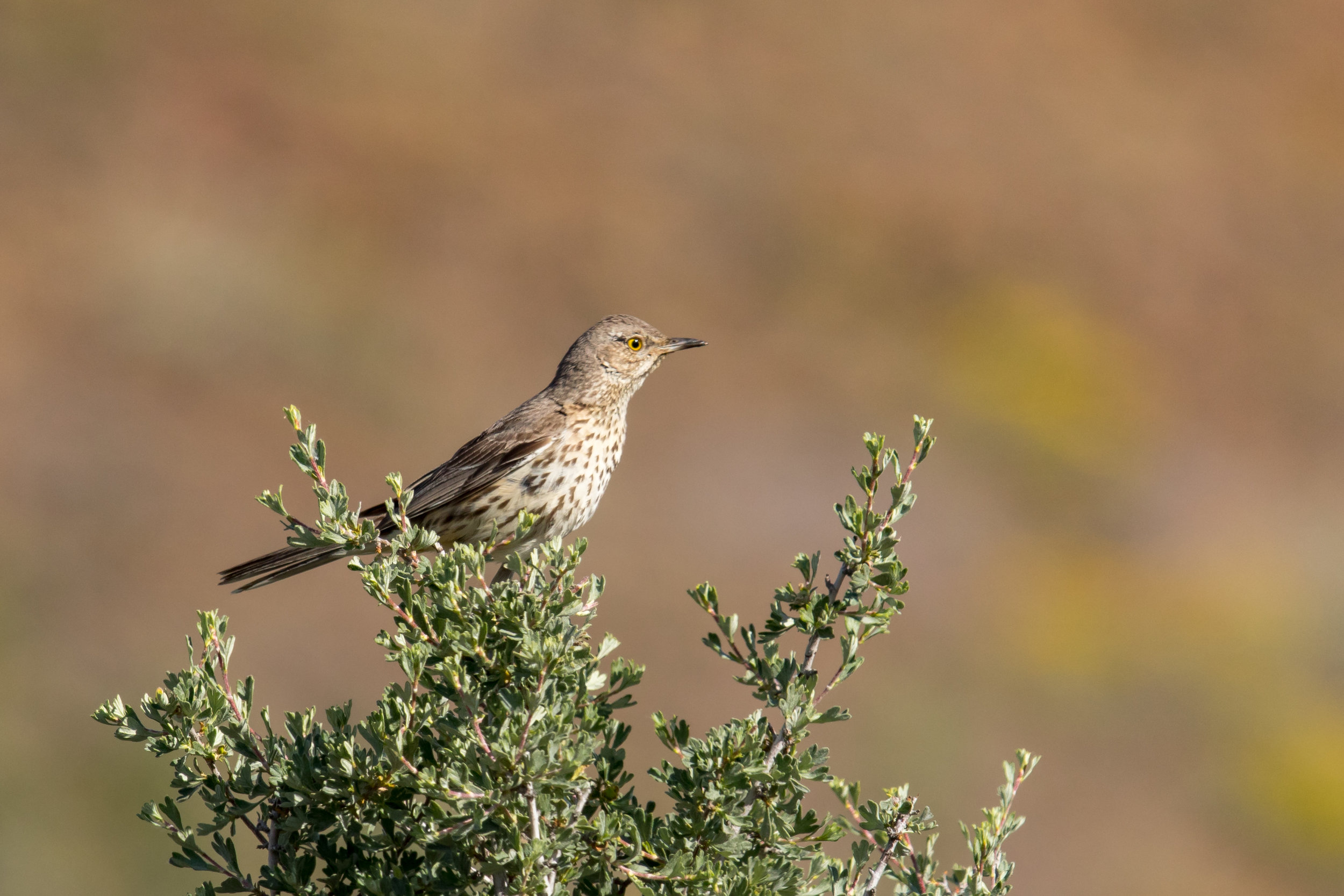Bird of the Month: Sage Thrasher
By Andy McCormick
PC: Mick Thompson (Sage Thrasher)
Scientific Name: Oreoscoptes montanus
Length 8.5 in
Wingspan 12 in
Weight 1.5 oz (43 g)
AOU Band code SATH
“He is the free spirit, the wild stallion of the sage,” Donald Kroodsma says in compliment to the Sage Thrasher and its repertoire of over 700 song units which it weaves into tireless singing from the darkness before dawn to nightfall. Highlights in its song are mimics of the nighthawk, gull, quail, and Sora and the song it mimics the most, the meadowlark. The pieces of song are vocalized at random and the Sage will use some sections for several minutes and then drop them to choose others.
The warbling, melodious songs are usually sung from the top of a sagebrush affording clear views for the birder. The songs are sung to attract a mate and the discriminating female will select the voice that will continue into the future. Territory defense is another purpose of the songs. The Sage Thrasher breeds in the sagebrush areas of central Washington and is in the genus Oreoscoptes, mountain mocker, from the Greek, oros, mountain or hill, and skopto, to mock (Holloway). It shares the Mimidae family with other mimics including the Northern Mockingbird, Gray Catbird and other thrashers. The species name, montanus, refers to its habitat within and west of the Rocky Mountains (Alderfer).
The Sage is the smallest of the thrashers and has a straight bill. Its chest is marked by dark streaking in spring which will wear to quite dull streaks later in the summer. There are few clear field marks except a black malar stripe, gray-brown back with a small yellow eye. It is a fairly nondescript looking bird. When not singing, the Sage can be quite elusive as it often runs rather than fly to the next sagebrush.
The Sage Thrasher is a short-distance migrant joining other thrashers to winter in the deserts of the southwestern U.S. and northern Mexico. It moves north in the early spring arriving in Washington in late March to breed exclusively in sagebrush. The nest is a bulky cup of sticks lined with grass and animal hair. Typically 3-5 brown-spotted, deep greenish blue eggs are deposited. Both parents incubate the eggs for about two weeks then together feed the young until first flight in another two weeks. Some breeding pairs in Idaho where a study is underway have raised two broods in a season (Kaufman, Reynolds, et al).
The shrub-steppe habitat required by the Sage Thrasher is characterized by the presence of big sagebrush (Artemisia tridentata). However, in Washington the bird is also found in bitterbrush (Purshia tridentata). It prefers bare ground between the shrubs and is not found where there is grass cover such as cheatgrass or crested wheatgrass. In Washington habitat loss resulting from conversion to agricultural uses has led to 50% loss of the shrub-steppe and severe fragmentation of remaining habitat (M. Vander Haegen in Reynolds, et al). This has resulted in elimination of the Sage Thrasher from parts of its historical range.


